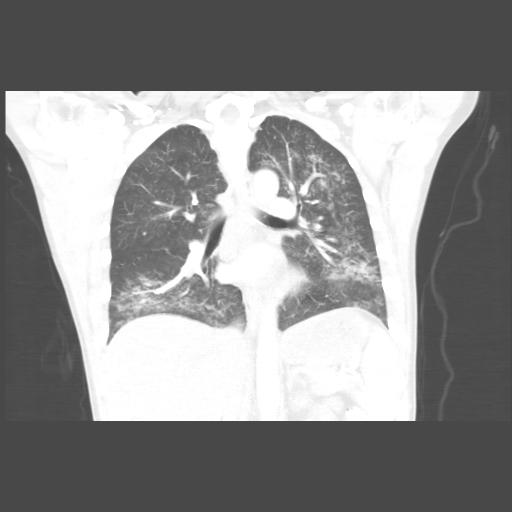Clinicians’ tool for EVALI treatment published in The Lancet Respiratory Medicine

Credit: University of Rochester Medical Center
As lung injuries from vaping continue to rise across the United States, Rochester physicians and New York health leaders developed a new tool to assist in the diagnosis and treatment of e-cigarette, or vaping, product use associated lung injury (EVALI).
The diagnostic/treatment algorithm, published in The Lancet Respiratory Medicine, complements and expands upon early guidance from the Centers for Disease Control and Prevention for managing the condition. It was created by pulmonary and toxicology experts at the University of Rochester and the New York State Department of Health.
“This illness has been vexing for physicians across the country and we continue to see people suffering from the dangerous effects of vaping,” said Daniel Croft, M.D., M.P.H., pulmonologist at the University of Rochester Medical Center’s Strong Memorial Hospital. “We expect the guide will help minimize missed diagnoses as cold and flu season ramps up.”
“As the Department of Health continues our investigation into this ongoing outbreak of vaping-associated illnesses, we are in close contact with health care providers across the state and are pleased to provide them with a new tool to help with proper diagnoses,” said Health Commissioner Howard Zucker, M.D., J.D. “We continue to urge New Yorkers to stop using vape products until the investigation is complete.”
The nationwide epidemic began in the spring and to date, the CDC has charted more than 2,000 cases, including 40 deaths. The cause of the illness remains a mystery, though many patients used products containing THC, the psychoactive component in marijuana. Patients experience devastating lung injury, some requiring long hospitalizations and treatment in the intensive care unit, followed by a slow recovery.
“This is a practical and user-friendly algorithm for clinicians when they are evaluating EVALI. It provides a flow-chart for information-gathering, evaluation and treatment of patients who are experiencing this life-threatening condition,” said Aleksandr Kalininskiy, M.D., a lead author with Christina Bach, M.D., at URMC.
Rochester physicians were first in the state to report unusual symptoms to the NYSDOH, and those early discussions led to an extensive and collaborative effort to track symptoms and identify appropriate testing, treatment and follow-up care. Data and samples of vaping materials from URMC’s nearly 20 patients were shared with NYSDOH, and its poison control centers, for analysis.
The first cases identified at Strong Memorial date back to June, said Nicholas Nacca, M.D., medical toxicologist and emergency physician, when a colleague asked him to review a young man’s “weird symptoms.” Nacca discussed it with other toxicologists in a professional organization’s online forum, where similar cases were shared, providing an early indication of the epidemic to come.
###
URMC is home to the Center for Inhalation and Flavoring Toxicology Research, one of the nation’s leading laboratories for study of the health effects of flavorings found in electronic cigarettes, tobacco and non-tobacco products. Scientists have analyzed vaping samples as part of the investigation into the source of the illness.
Additional authors of the article are Matthew McGraw, M.D., of URMC, Gary Ginsberg, Ph.D., and Kristen Navarette, M.D., of the NYSDOH; and Jeanna Marraffa, Pharm.D., of the Upstate New York Poison Control Center at SUNY Upstate Medical University.
Media Contact
Leslie White
[email protected]
585-273-1119
Original Source
https:/




